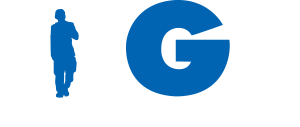Review of Promising and Effective Juvenile Delinquency, Youth Gang, and Gang-Related Crime Reduction Programs
In 2005, the SPT was developed as a technical assistance resource to serve professionals in the juvenile justice and criminal justice systems and community agencies that deal with gangs. With few programs specifically evaluated for effectiveness with gang members at the time, this resource was established as a source to provide recognition to those programs, structures, and best practices that have demonstrated successful outcomes in reducing gang involvement as well as gang-related crime and violence. The Program Matrix, a tool for locating programs that are applicable to gang-involved individuals, provides a detailed review of delinquency prevention, intervention, suppression, and treatment programs that have a higher potential for preventing and reducing serious and violent crime and delinquency, including gang activity. Although the Program Matrix is not exhaustive, NGC continues to add programs based on both a review of research institutes that use similar rating scales effectiveness (see Related Web Sites) and the originally developed eligibility and rating criteria explained in the sections that follow.
Program Classifications
Readers are reminded that few gang-related programs have been rigorously evaluated; hence, many of the programs described here are rated as “promising.”
Programs are cross-referenced for specific age groups and defined by the following classifications:
- PG=Promising gang program
- EG=Effective gang program
- PGS=Promising gang structure
- EGS=Effective gang structure
- PD=Promising delinquency program
- ED=Effective delinquency program
- PDS=Promising delinquency structure
- EDS=Effective delinquency structure
- PA=Promising adult program
- EA=Effective adult program
Each of the programs listed contains specific contact information for readers seeking more detailed information regarding program methodology, cost, and replication.
Program Eligibility Checklist for Inclusion
- ✓Includes a prevention, intervention, suppression, or treatment program with a high potential for preventing and reducing gang-related serious and violent delinquency and other gang-associated crimes
- ✓Aims to explicitly reduce or prevent gang-related behavior, particularly among juvenile at-risk and young adult populations
- ✓Involves youth and adults, typically up to approximately age 35
- ✓Involves a comparison condition
- ✓Date of supporting study publication is 1950 or later
Program Matrix Rating Criteria
In 2005, systematic reviews of gang programs were made a U.S. government priority. Nine federal agencies, including the U.S. Department of Justice, were directed by the White House to establish criteria for these reviews. Thus, gang programs selected for inclusion in the SPT are scored on the following agreed-upon and widely accepted scientific criteria for judging program effectiveness.
The four program effectiveness dimensions are:
- Conceptual framework (9 points)
- Program fidelity (9 points)
- Evaluation design (9 points)
- Outcome evidence (9 points)
Each of these program effectiveness criteria is allocated a total of 9 points, with an overall maximum of 36 points. The overall scores on the effectiveness dimensions are used to classify programs into three effectiveness categories and provide the user with a summary knowledge base of the research supporting a particular program.
- The supporting study must investigate the effects of a prevention or intervention program designed to address problem behaviors that place youth at risk for juvenile delinquency and other problem behaviors. The program must focus on one of the following problem behaviors: delinquency; violence; youth gang involvement; alcohol, tobacco, and drug use; academic difficulties; family functioning; trauma exposure; or sexual activity/exploitation.
- The intervention must (a) explicitly aim to prevent or reduce a problem behavior in a universal or selected juvenile population; or (b) if not explicitly aimed to reduce or prevent a problem behavior, apply to a juvenile population at risk for problem behaviors.
- The supporting study design must involve a comparison condition. A comparison condition can be (a) no treatment; (b) treatment as usual; (c) a placebo treatment; (d) a straw-man alternative treatment; or (e) a time period. Thus, eligible study designs may include experimental with random assignment; nonequivalent quasi-experimental; and quasi-experimental, one-group pretest-posttest studies. Nonexperimental and case study designs are specifically excluded.
- The date of publication or reporting of the study must be subsequent to 1950.
Program (Effectiveness) Rating Levels
Level I programs (considered “effective/exemplary” programs) must score an overall rating of at least 28 points with at least 6 points in each dimension of program effectiveness. In general, when implemented with a high degree of fidelity, these programs demonstrate robust empirical findings using a reputable conceptual framework and an evaluation design of the highest quality.
Level II programs (considered “effective” programs) must score an overall rating of at least 23 points with at least 5 points in each dimension of program effectiveness. In general, when implemented with sufficient fidelity, these programs demonstrate adequate empirical findings using a sound conceptual framework and an evaluation design of high quality.
Level III programs (considered “promising” programs) must score an overall rating of at least 18 points with at least 4 points in each dimension of program effectiveness.
Promising or Effective Program Structures
The NGC database of promising and effective programs is unique in that it includes program structures. Some programs are purely structures, which, as such, do not have a specific therapeutic content. That is, they provide a setting or context that fulfills specific needs or requirements other than service delivery, and their delinquency or gang-reduction potential is very small and may be short-term. Shelter-care facilities, detention centers, group homes, and intensive supervision programs are prime examples of such program structures or formats that have intrinsic value for purposes other than delinquency reduction, such as controlling offenders or providing a safe environment for children and adolescents. However, services could be provided in these settings or formats to enhance their value in a continuum of structures and services.

